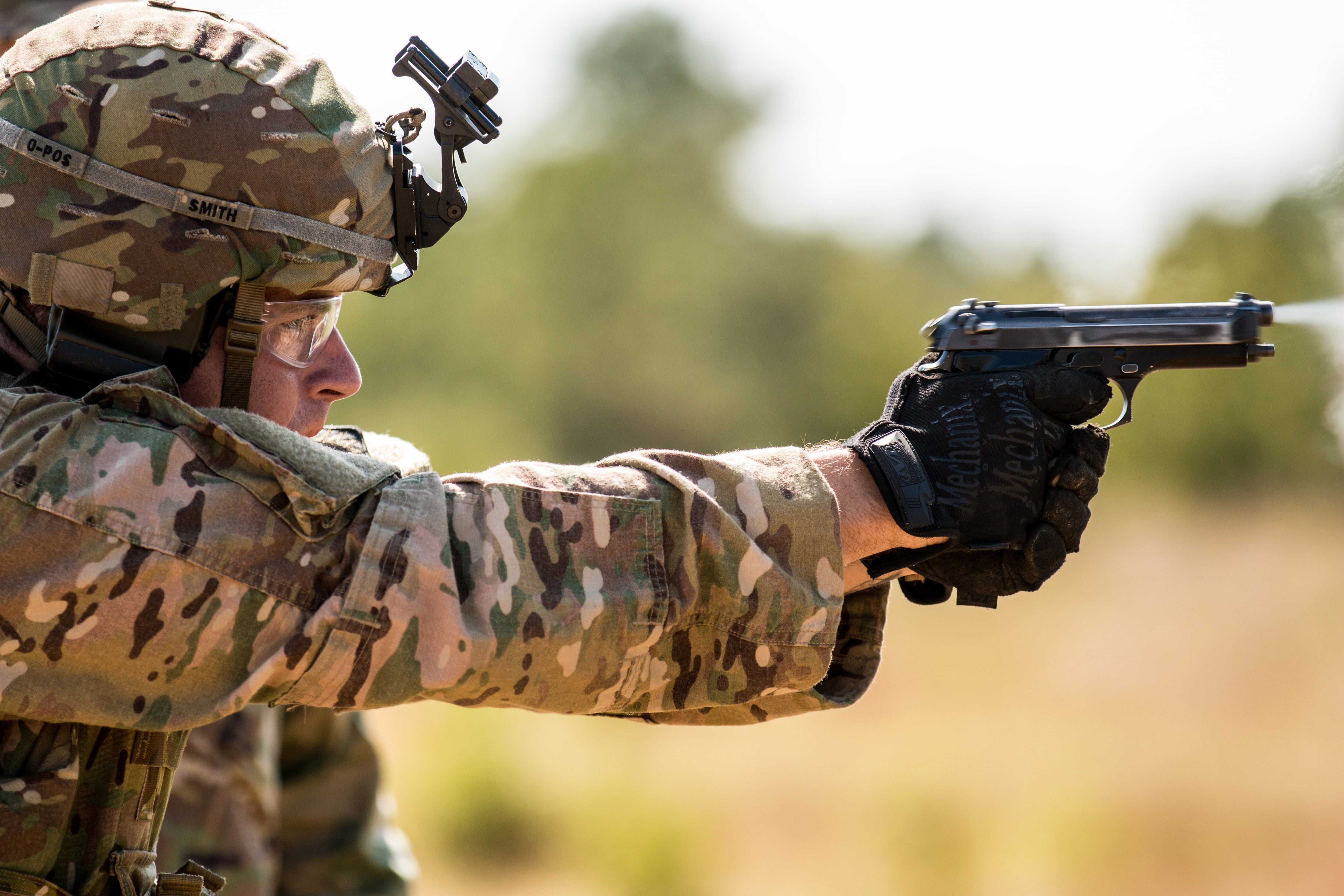As the Army embarks on evaluating and testing new service pistol contestants, the Army's top general wants to scrap the long, expensive multi-year process and just pick a gun.
"We're not figuring out the next lunar landing. This is a pistol. Two years to test? At $17 million?" Milley said to an audience at a Washington, D.C., think tank on March 10. "You give me $17 million on a credit card, and I'll call Cabela's tonight, and I'll outfit every soldier, sailor, airman and Marine with a pistol for $17 million. And I'll get a discount on a bulk buy."
While the Beretta M9 has been the Army’s pistol since 1985, the military uses other handguns, particularly in special operations. Green Berets regularly use Glock 9mm pistols, and last year Marine Special Operations allowed use of the 9mm Glock 19 in addition to the .45-caliber Colt 1911. Navy SEALs generally use the Sig Sauer P226 and, on occasion, Heckler & Koch's .45-caliber HK45C
and, on occasion, Heckler & Koch's .45-caliber HK45C .
.
The Army addressed reports that Milley had an eye on expanding a special operations contract with Glock to supply the broader Army. In a statement to Army Times, the Army denied that the service had contacted Glock or any other vendor since MHS remains in the source selection phase.
"Although the Army is the managing authority for SOCOM's handgun contract, no action has been taken to contact them about utilizing that vehicle to directly procure one handgun or another outside of the specified source selection process. The Army is dedicated to ensuring that all of its material capability requirements are met affordably and without prejudice," Army spokesman Col. Patrick Seiber said in a statement.

An Army Sgt. fires an M9 Beretta at a marksmanship competition. The M9 has been the Army's gun since 1985, and the service is looking to replace it.
Photo Credit: Spc. L'Erin Wynn/Army
The MHS competition is open caliber; Milley's desire to pick a gun, if that choice follows general trends in special operations and law enforcement, might mean the Army sticks with a 9mm round and end its flirtation with going bigger. The 9mm remains the standard NATO round, and some argue reduced wear-and-tear, higher magazine capacity, and ease of shooting make it preferable. While others say a larger round's power makes it more effective, others counter that shot placement and other bullet attributes are more important.
A move to can the MHS process could, in theory, save the Army a lot of money in the procurement process. Many handguns sell in the $500 range, so while Milley's Cabela's statement likely stretched what $17 million could buy, that testing price tag would buy 34,000 guns at that price. Projected costs of the MHS program arguably stray far from the market in the other direction. The maximum contract value of $580 million would be able to buy 1.16 million handguns, more than double the solicitation's cap of 280,000 guns for the Army over 10 years with an option for other services to buy 212,000. (Comparisons are not necessarily apples-to-apples as MHS calls for a "system" including parts and accessories and ammunition.)
"It’s not a lack of oversight. We’re not asking for free rein, let’s go party," Milley said to the think tank. "I’m saying: Let me — and then hold me accountable — let me figure out what type of pistol we need, and let me go buy it and not go through nine years of scrutiny."
Milley was travelling this week and unavailable for comment, according to a spokesman.
Even before the submission deadline last month, the road to a new pistol has been long and winding. In 2008, the MHS started as an Air Force program. But little progress was made before January 2013, when the Army kick-started the latest efforts by asking industry for more information. Additional discussions with industry drew out the release of the 350-plus-page document until August 2015. Then the solicitation's deadline for submissions was Feb. 12 of this year.
The Army won't publicly say the number of competing companies or proposals (each can submit two different calibers), but after a battery of lab tests and evaluations, three will make it to user trials. That factored into Sen. John McCain's recent complaints about the wasteful, micromanaging-yet-vague procurement process: soldiers won't even test most submissions.
Milley echoed the Arizona Republican's complaints about the system. He said "anyone out there" would argue that "the system is slow," particularly in a case where he said "arguably [the pistol is] the least lethal and important weapon system in Department of Defense inventory." He blamed layers upon layers of processes, where centralized and bureaucratic lawyer-guided solutions to accountability problems have gummed up the system. Milley said the best fix is to "empower and decentralize" while maintaining accountability.
"I think I should be able to look at someone and say here's your task, here's why you're doing it, here's the purpose. Here's the end-state I want you to achieve by such-and-such a time. Go forth and have at it. If you succeed, you're promoted, and I give you a medal. If you fail, you get fired. And you hold people accountable," Milley said.
The controversy and complexity isn't new: in the 1980s the seven-year XM9 competition that Beretta won resulted in competitors crying foul, as did the XM10 re-test. And the Army's difficulty of picking a gun isn't limited to the pistol. In 2013, the Army abandoned a multi-year pursuit of a new carbine, a search that a Defense Department Inspector General report said "wasted $14 million." The Army ultimately said the rifles tested did not offer enough advantages over Colt's M4 series to justify massive replacement costs.





